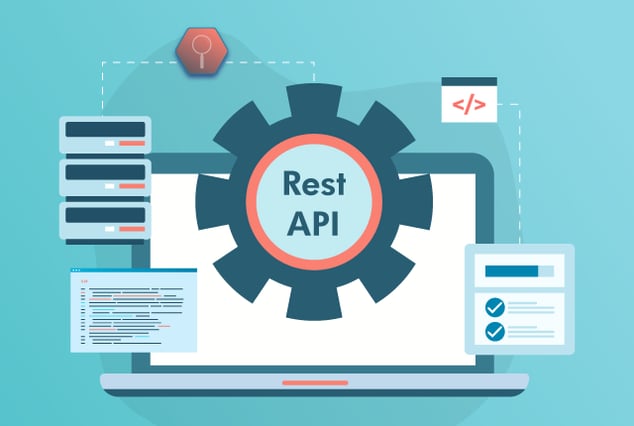
Over the past few years, a growing number of healthcare providers have started using websites and mobile applications to collaborate efficiently with partners and patient support services and communicate more effectively with patients in a timely manner. APIs allow healthcare companies to do all this.
Healthcare APIs help to power patient-facing applications that create new ways for healthcare providers to connect with their patients through web, social and mobile portals. Moreover, by developing internal APIs, healthcare providers can offer their partners new tools for streamlining operations and improving quality of care. In healthcare, where quick access to correct information is critical for making the right decision, having a well-tested API strategy in place is of utmost importance.
What Is an App in Healthcare?
An app in the healthcare industry is an application program designed to provide health-related services for transportable devices including smartphones and tablets. Since a healthcare app is accessible to both patients and medical providers at home and on-the-go, these healthcare software applications are often categorized as mobile health (mHealth) and tele-health software applications.
What Is API Testing?
API testing is a type of software testing designed to validate Application Programming Interfaces, or APIs. API testing aims to review the functionality, performance, reliability and security of these programming interfaces, often with the assistance of API testing tools. API tests focus on the business logic layer of the software’s architecture rather than the look and feel of the user interface.
Why Is API Testing So Important to Healthcare?
API testing is important to healthcare app development in particular, since applications must meet complex usage, security, and regulatory compliance requirements. In fact, many QA teams structure their software testing strategies for HIPAA compliance and HITECH compliance when performing healthcare app testing.
For healthcare app development, API testing is critical when:
-
Identifying problems early in the life cycle: API testing tools support continuous testing, allowing QA engineers to catch defects and bugs early in the development cycle.
-
Integrating with third-party services: Your application features are enhanced with third-party integration, but it takes only one slow API call to a third-party service to decelerate the entire software application.
-
Enabling must-have mobile usage: Mobile platforms rely on API data retrieval for a smooth, seamless experience within the healthcare app.
-
Securing patient and organizational data: Protected health information (PHI) including health records, account details, identity data and payment information often require APIs for storage and retrieval.
Improve the Coverage of Your Test Cycle
There’s an incentive to minimize all delays between development and GUI testing. However, only testing the core, code-level functionality of an application gives you a proper evaluation of overall build quality. Getting that indication early uncovers the kind of small, detailed problems that can crop up once you enter GUI - problems that can take more work and resources to unwind later in the QA process.
The time and expense of API testing produce the best results when paired with your engineer’s development work. Given the extreme rigors a healthcare app must pass through API testing in healthcare software applications gives you an added advantage during the software release cycle.
Save Resources
Following automated API testing best practices with API testing tools frees up your engineers to focus on the high-priority, high-value areas of your application. They’re no longer tasked with mundane actions such as the staging and re-staging of repetitive test execution and manual data entry to mount multiple test executions. Instead, automated API testing helps provide the lightning-speeds needed during healthcare app testing to remain competitive in the current era of breakneck DevOps.
Those savings are felt when you’re performing bulk testing, including load, functional, and reliability testing. You’ll see all sorts of efficiency savings once you grant your QA team and their automated process access to the core functionality of your healthcare app. For example, automation allows engineers to verify existing features alongside the newly written code, vastly improving your regression cycles. You’ll get similar improvements once you start testing and creating reports across various formats and, crucially, platforms.
The less time you spend on the manual testing of the GUI phase, the more time and money you’ll save across your project.
Faster and More Efficient
Here’s a simple comparison to demonstrate the time you’ll save through API testing. Since GUI requires that each webpage element be polled, the process is pretty time consuming. Here’s the difference across the process of testing your core functionality (in parallel execution):

That’s a remarkable difference. Once you factor in the extraordinary complexity of your healthcare application, which will eventually have to withstand massive amounts of patient data each day, you really get an idea of the API advantage.
We understand the time pressures that come to bear within a release cycle, and the resulting temptation to skip over API testing. However, if you want your application to function properly, to be secure and reliable, then you must consider the benefits of API testing. It gets you closer to the core of your application. It lets you ensure there’s a stable foundation beneath your healthcare app before you go on to consider final user capabilities. In a field so affected by security and compliance issues, it’s a must.
How to Test an API
API testing doesn’t apply standard user inputs and outputs. Instead, a QA tester sends out a call to the API, receives an output and records the system’s response. The types of output you can expect to receive while performing API testing on your healthcare app can include:
-
Types of data
-
Status of pass or fail
-
Call to another API or event
How To Do API Testing
Now that you understand what is API testing and how to test API, it’s time for you to discover how to do API testing in a healthcare software application. With the assistance of the right API testing tools, consider adding these QA processes to your software testing cycle:
-
Functionality Testing: Does the API work and execute expected behavior?
-
Reliability Testing: Can the API be consistently connected to and execute consistent results?
-
Security Testing: Does the API have defined security requirements?
-
Load Testing: Can the API handle a sizable amount of calls?
-
Proficiency Testing: Does the API increase what developers are able to do?
-
Negative Testing: How does the API perform with incorrect or incompatible inputs?
-
Creativity Testing: Can the API handle being applied in non-standard scenarios?
Still unsure how to apply API testing to your healthcare app? Development? Partner with a professional QA services partner like QASource. Our team of healthcare app testing experts are skilled in API testing in healthcare software applications and can guide your team towards healthcare software testing best practices. Here’s how you can get in touch with a QASource expert today.
![Top 10 Offshore Testing Companies in the USA [2025 List] Top 10 Offshore Testing Companies in the USA [2025 List]](https://blog.qasource.com/hs-fs/hubfs/top-10-offshore-testing-companies-in-usa.jpg?width=639&height=426&name=top-10-offshore-testing-companies-in-usa.jpg)

